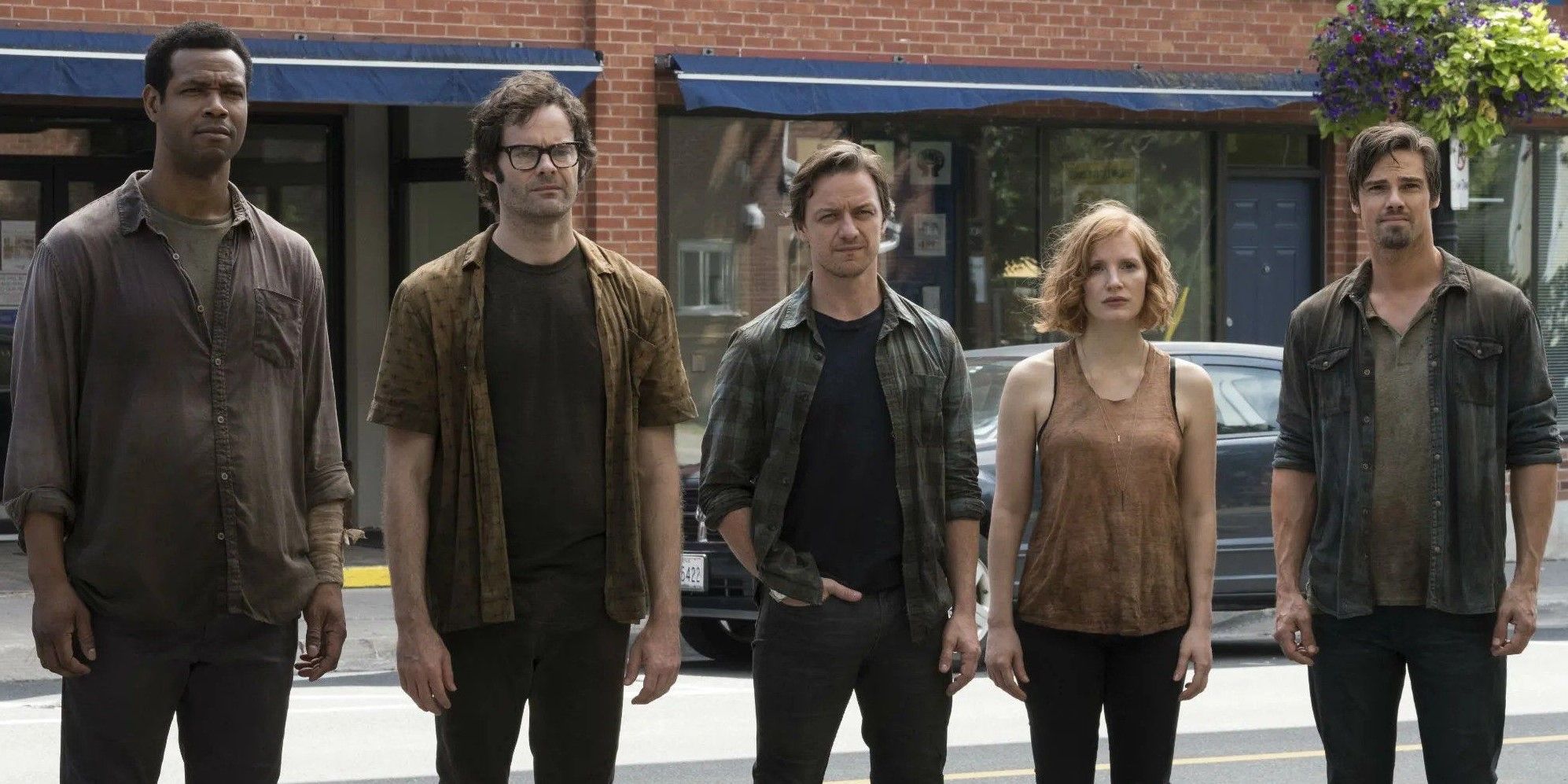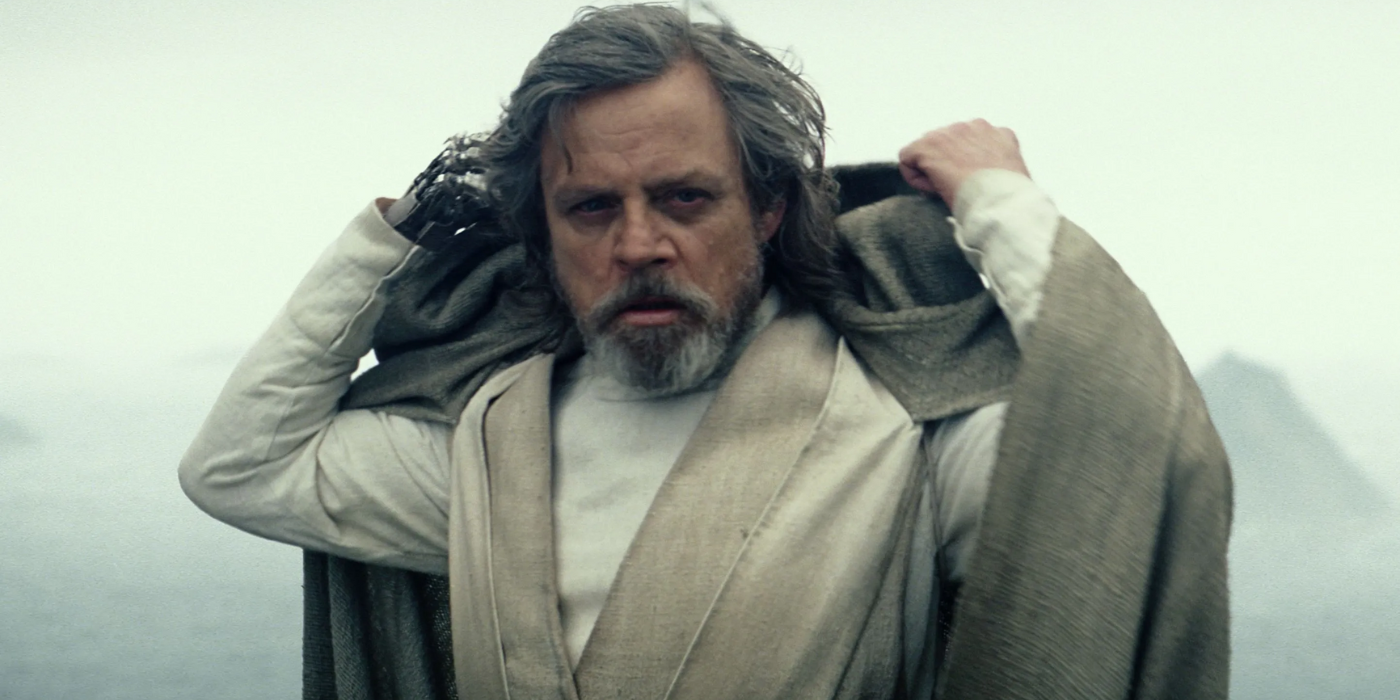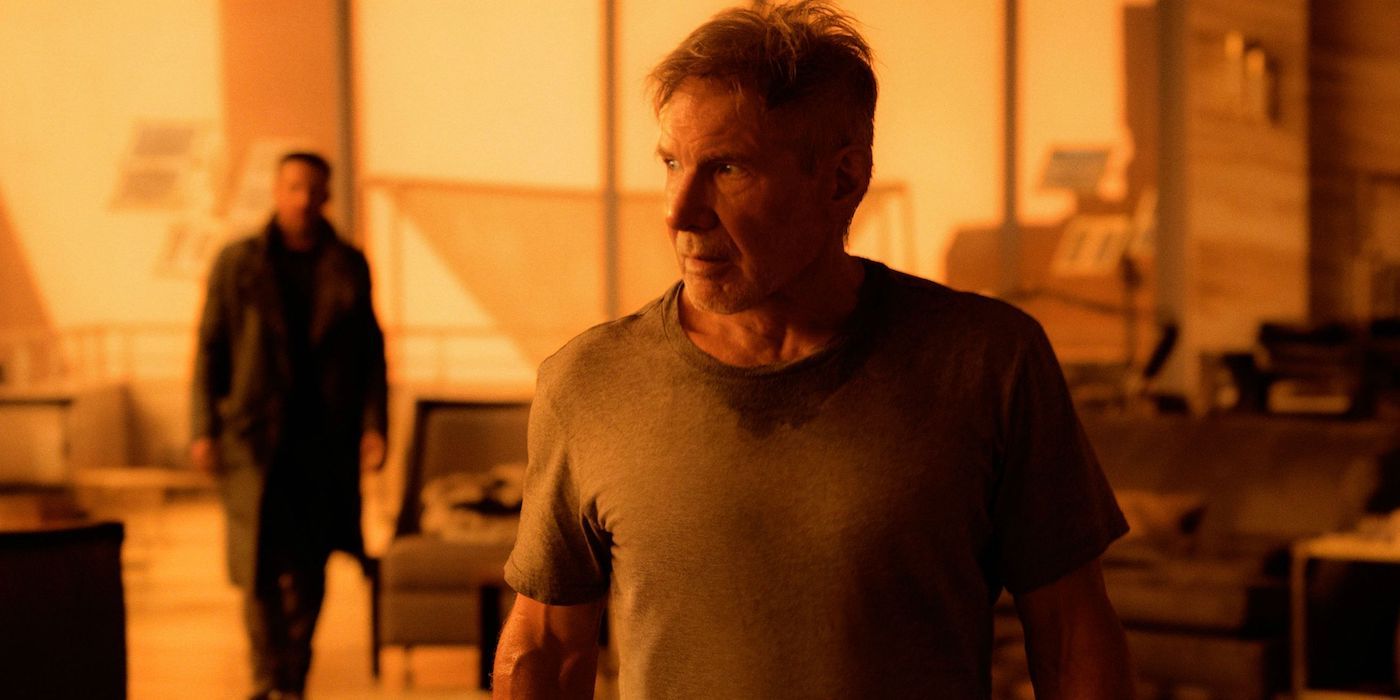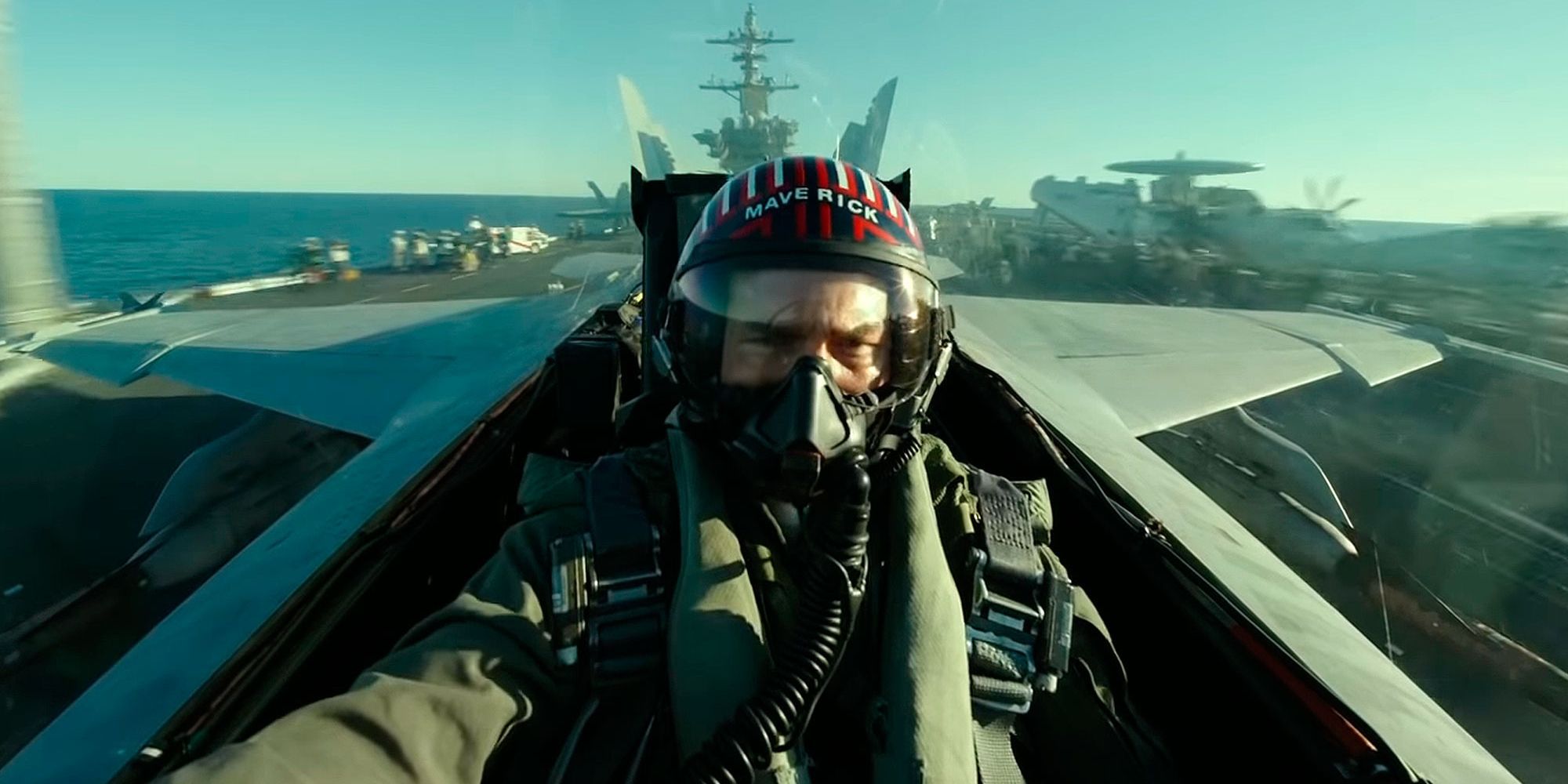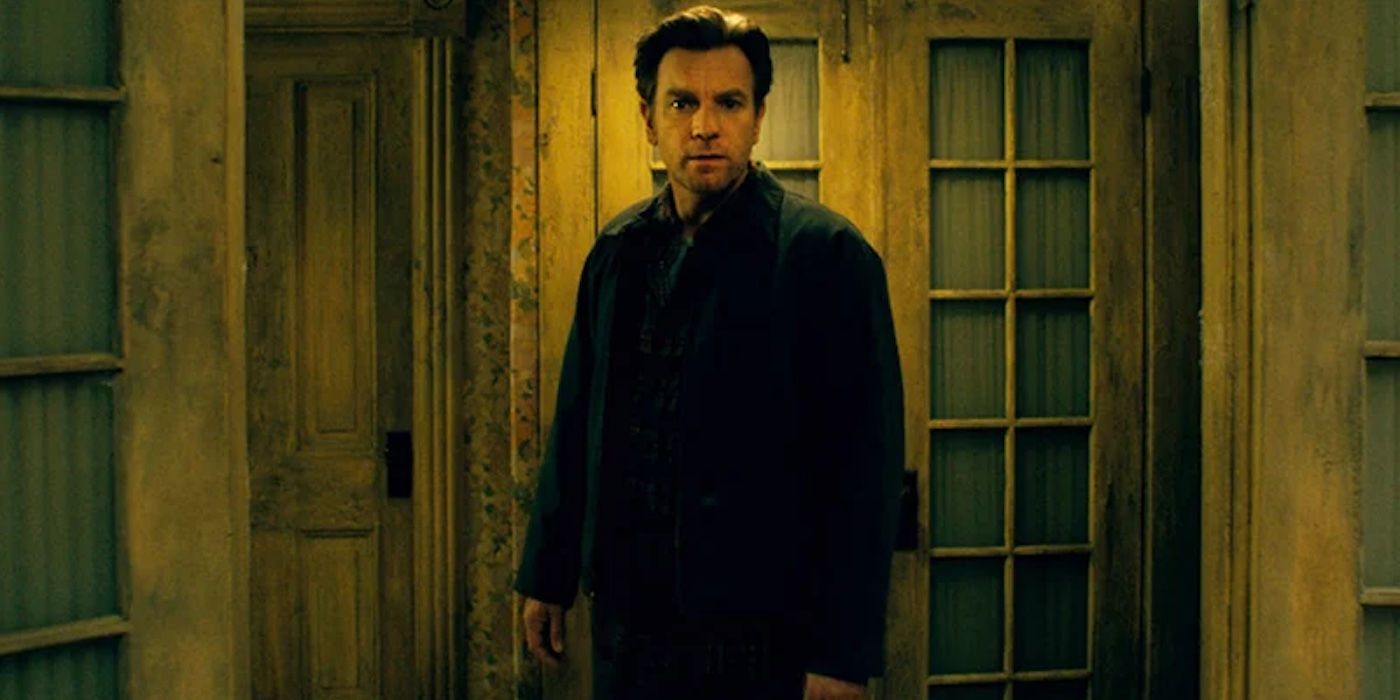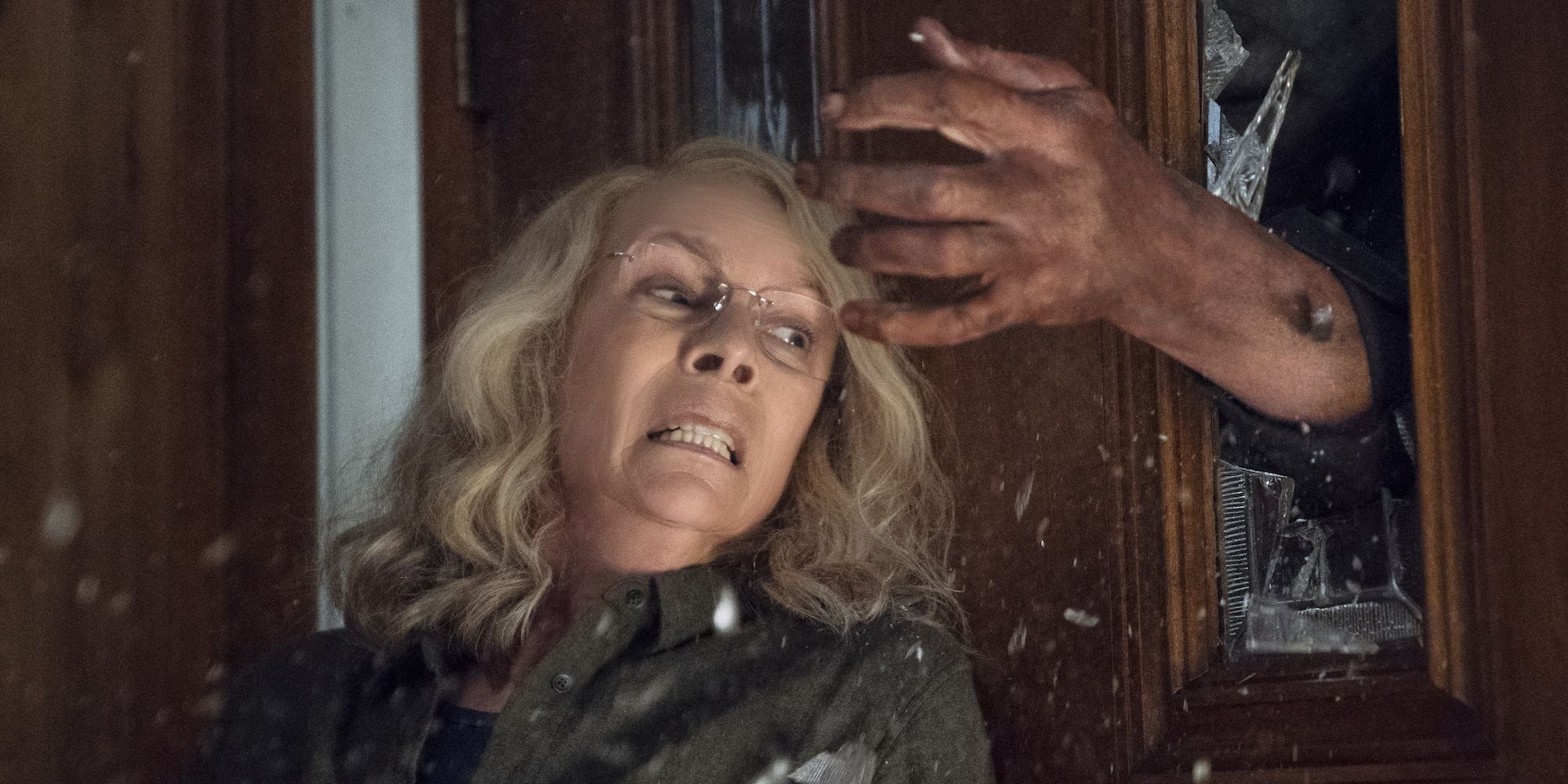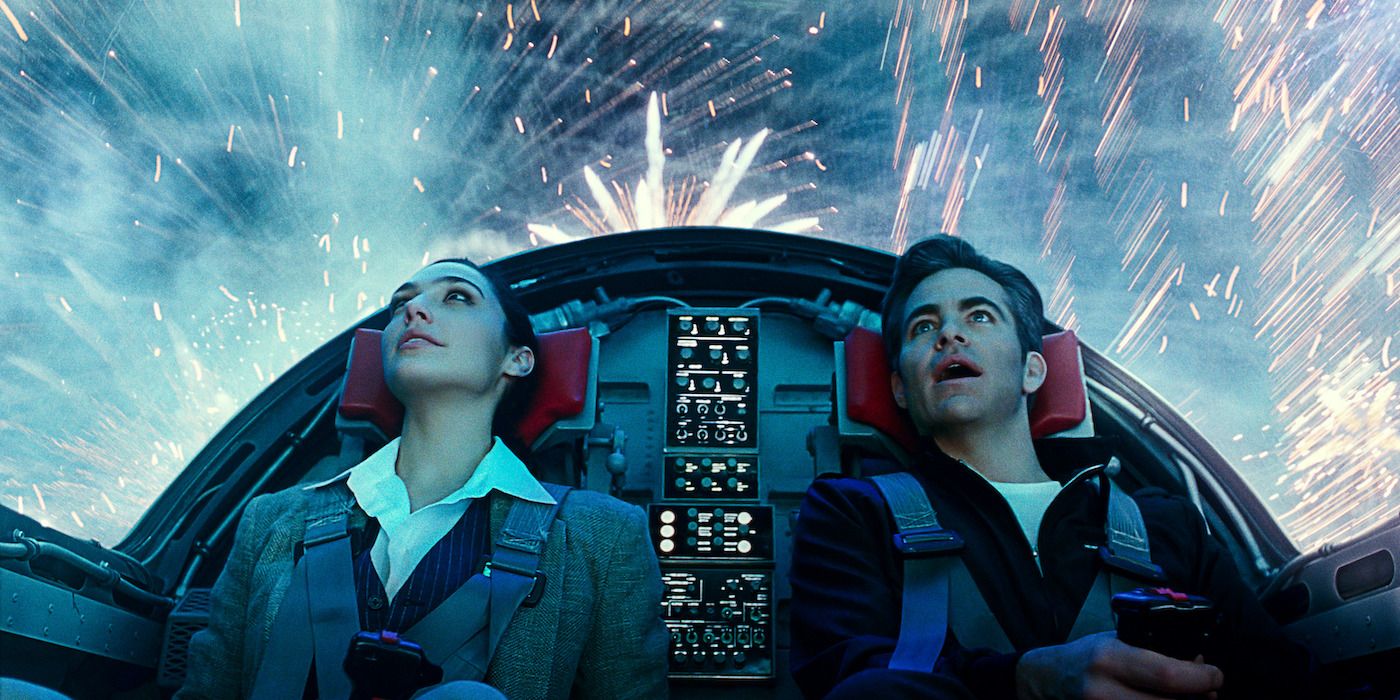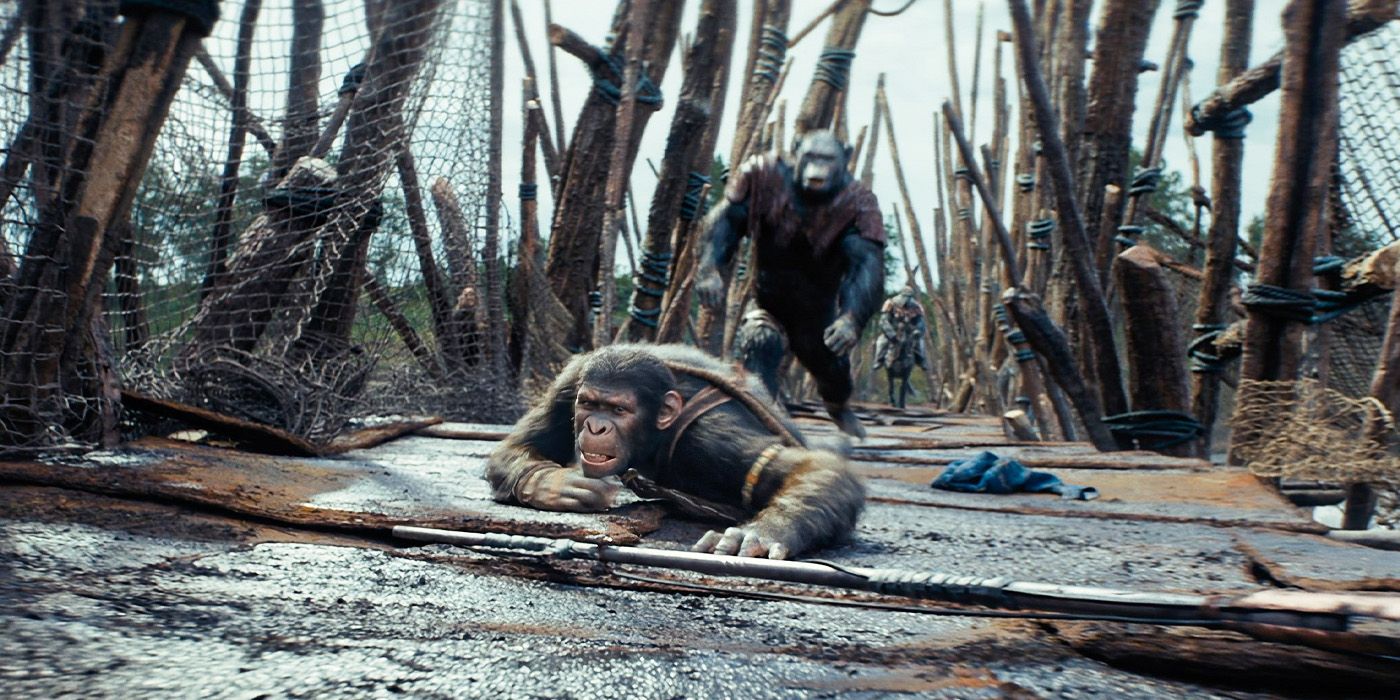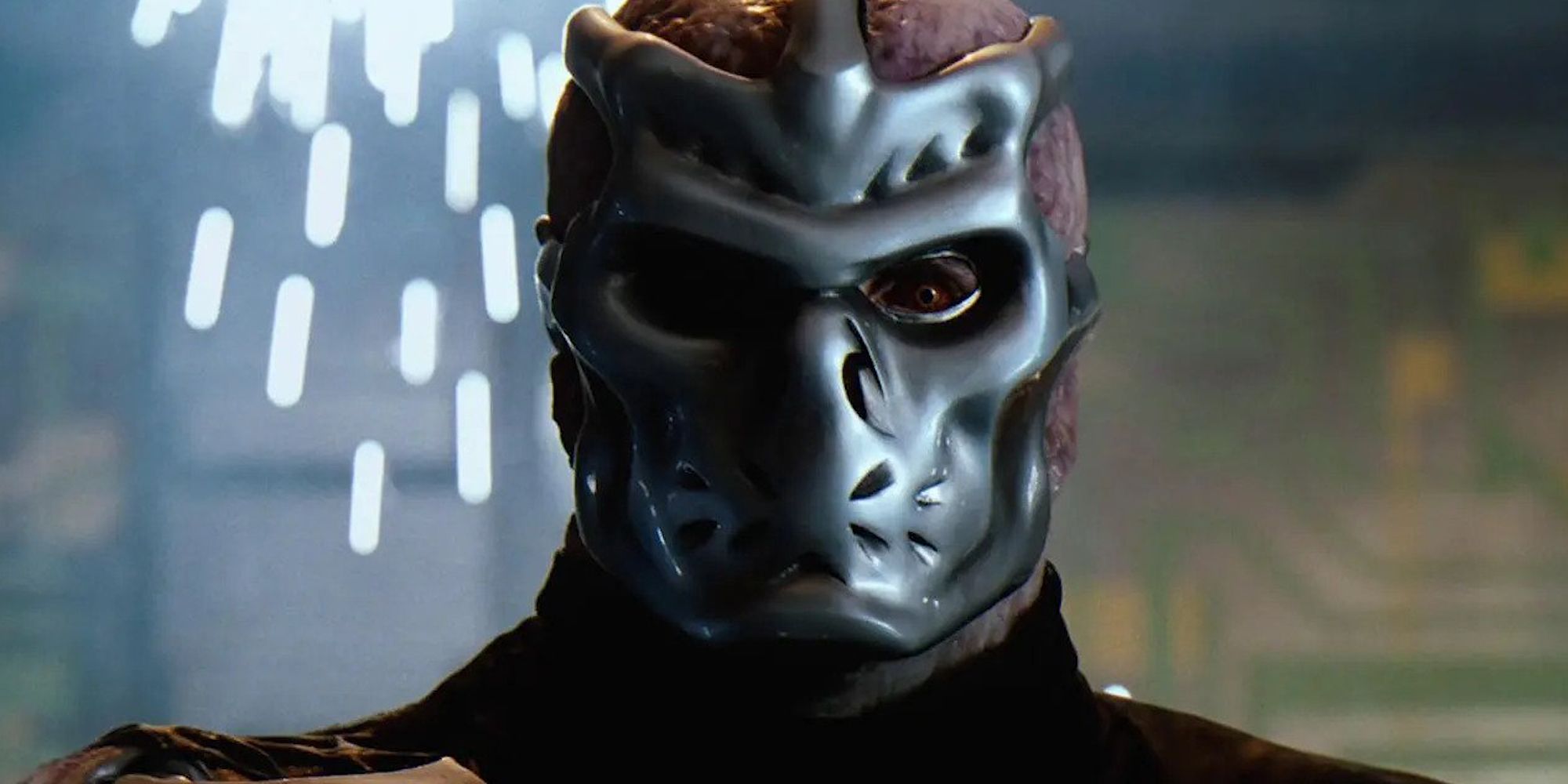[ad_1]
If a movie comes out and does well, the idea of a sequel is likely to be seen as enticing by producers… and hopefully, the creative minds behind the first film, too. Ideally, the prospect of a sequel will be desirable to both parties, and if it’s particularly desirable, it stands to reason that the early stages of production for a sequel will happen relatively fast.
For some of the following sequels, that process of commencing production took surprisingly long, and the sequels understandably took place roughly the same number of years later in-universe and in real life. At other times, the sequels didn’t take as long to come out, but there was a time jump, sometimes focusing on new characters as a result (while telling a continuation of the same core story). With dozens or even hundreds of years between some of these examples, it is inarguably an interesting way to shake things up for an ongoing series.
10 ‘Gladiator II’ (2024)
Set 16 years after ‘Gladiator’ (2000)
While a fair few historical/action epics followed in the wake of Gladiator throughout the early to mid-2000s, it took a considerable amount of time for an actual sequel to get released. Of course, Gladiator II was always going to have its work cut out for it, given how it ended with relatively few main characters left alive, so a time-skip made sense.
In the end, Gladiator II was released 24 years after the original, but the jump forward in time within the film’s universe was a little less dramatic, at 16 years. Ridley Scott’s sequel is solid, even if it doesn’t quite reach the heights of the first movie, but it delivers a decently executed storyline and some pretty impressive action set pieces (the jump forward in special effects between 2000 and 2024 is on full display).
9 ‘It: Chapter Two’ (2019)
Set 27 years after ‘It’ (2017)
As a pretty clear duology, It: Chapter Two is an interesting example of a deliberate jump forward in time, with it coming out only two years after It, but (mostly) taking place 27 years later. This was because of the approach taken to adapting Stephen King’s mammoth novel, It, which mostly takes place in 1958 and 1985, but jumps between those periods (and travels to a few other years) quite consistently. In the adaptation, though, things jump from 1989 in the first movie to 2016 (again, mostly) in the second one.
The approach taken in the novel is a bit more engaging, and the approach taken by the films does result in a feeling of It: Chapter Two repeating the first movie, whereas the novel has the characters similarly compelling as kids and adults. But the novel is also well over 1000 pages long, so the splitting was perhaps inevitable, and doing it this way (with a few flashbacks found in Chapter Two for good measure) was what they went with.
- Release Date
- September 6, 2019
- Runtime
- 169 Minutes
- Main Genre
- Horror
8 ‘Star Wars: The Force Awakens’ (2015)
Set 30 years after ‘Return of the Jedi’ (1983)
While there were other Star Wars movies released between 1983’s Return of the Jedi and 2015’s The Force Awakens, the former was Episode VI, and the latter was Episode VII. By that logic, one is a sequel to the other, and the span of 32 years between the release of both movies is reflected with the action in The Force Awakens taking place three decades on from Return of the Jedi.
It’s a galaxy far, far away, but it seems like they still have Earth-specific concepts, like years that (seemingly) last 365 days… returning characters do look 30 Earth years older, at least. Anyway, The Force Awakens is divisive in other ways, so maybe most people aren’t going to be bothered by this idea, but it’s there. Also, whether on Earth, with reboots and sequels, or in this far away galaxy, with its continual wars among the stars, history seems destined to repeat itself. Destined to repeat itself.
- Release Date
- December 17, 2015
- Cast
- Daisy Ridley , John Boyega , Oscar Isaac , Harrison Ford , Mark Hamill , Carrie Fisher , Adam Driver , Andy Serkis , Lupita Nyong’O , Max Von Sydow , Peter Mayhew , Simon Pegg
- Runtime
- 136 Minutes
7 ‘Blade Runner 2049’ (2017)
Set 30 years after ‘Blade Runner’ (1982)
There’s a good argument to be made that Blade Runner 2049, perhaps more than most distant sequels, shows how to re-enter a unique cinematic universe decades later in a seamless fashion. 1982’s Blade Runner very explicitly says it takes place in 2019, and then just two years before that year in real life, a sequel clearly set 30 years later (see the title) came out.
The world in Blade Runner 2049 has advanced in the way the 2019 version of that world might’ve, rather than this 2049 reflecting what the actual 2049 might look like specifically. It’s for this reason that the world feels appropriately built upon and expanded, all to the point that the return of Harrison Ford, plus some thematic ideas explored in the first film, honestly feel more like icing on the cake. Across two movies made decades apart, the Blade Runner universe remains vast, mysterious, and intensely immersive, and that’s what makes the pair of movies so great.
- Release Date
- October 6, 2017
- Director
- Denis Villeneuve
- Cast
- Ryan Gosling , Harrison Ford , Jared Leto , Ana De Armas , Robin Wright , Lennie James , Dave Bautista , Carla Juri , Hiam Abbass , Barkhad Abdi , David Dastmalchian , Mackenzie Davis , Sylvia Hoeks
- Runtime
- 163 Minutes
6 ‘Top Gun: Maverick’ (2022)
Set 30-ish years after ‘Top Gun’ (1986)
While it’s not as cut-and-dry as Blade Runner being set in 2019 and Blade Runner 2049 being set in its titular year, it’s likely at least 30 years have passed between Top Gun and Top Gun: Maverick. Of course, Tom Cruise aging less than most people muddies the water further, but Bradley Bradshaw, who was four years old in the first movie, is played by Miles Teller in Maverick, and Teller turned 35 in 2022, so… maybe 31 years?
Sure, Bradley – now known as “Rooster” – could be in his late 20s rather than his early 30s, but technology has also marched on considerably in Top Gun: Maverick, making Cruise’s Maverick even more of an outlier, what with his old-school ways and all. And Maverick was released 36 years after Top Gun, so settling on “30-ish” years for the gap of time between movies feels like a decent estimate.
- Release Date
- May 27, 2022
- Director
- Joseph Kosinski
- Runtime
- 146
5 ‘Doctor Sleep’ (2019)
Set 30-ish years after ‘The Shining’ (1980)
It: Chapter Two wasn’t the only Stephen King-related sequel to come out in 2019 and have its action be set a considerable amount of time after the original film. The legendary horror movie that was The Shining (1980) got a sequel in the form of Doctor Sleep in 2019, with it being an adaptation of the 2013 King novel of the same name, albeit also feeling like a sequel to the 1980 version of The Shining, which made some infamous deviations from its source material.
Doctor Sleep has an adult Danny in what feels like 30 years in the future, at minimum. However, it could feasibly be 39 years, because Ewan McGregor – who plays Danny in Doctor Sleep – isn’t much older than Danny Lloyd, who played the character in The Shining (they were born in 1971 and 1972, respectively).
Doctor Sleep
- Release Date
- October 30, 2019
- Runtime
- 153 minutes
4 ‘Halloween’ (2018)
Set 40 years after ‘Halloween’ (1978)
There are a frustrating number of movies called Halloween, including 1978’s Halloween and 2018’s Halloween. Many other Halloween movies existed between the releases of these two (including a remake of the 1978 version in 2007 also just called Halloween), but 2018’s Halloween ignored them and instead served as a direct sequel to the original. It’s safe to say that the chronology of this series is more than a little unconventional.
Jamie Lee Curtis returned, and the film was both set 40 years on from the events of the original and released 40 years after the first movie came out, helped codify various slasher movie tropes, and terrified audiences. Halloween (2018) itself got two sequels, but these were made in pretty quick succession not long after this Halloween came out, and as such, logically didn’t jump forward in time.
- Release Date
- October 18, 2018
- Director
- David Gordon Green
- Runtime
- 106 Minutes
3 ‘Wonder Woman 1984’ (2020)
Set 66 years after ‘Wonder Woman’ (2017)
2017’s Wonder Woman started in the present, flashed back to before 1918, and then had most of its scenes take place during 1918, the final year of World War I. That does make it an interesting superhero movie, given it’s also something of a war movie that has clear fantastical elements, with that past being abandoned for a slightly more recent past in the film’s 2020 sequel.
Like with Blade Runner 2049, it doesn’t take a genius to figure out that Wonder Woman 1984 is predominantly set in 1984. It was not a great sequel, but at least it shook things up a bit by jumping forward 66 years, all the while still making sure to set itself some time before the titular character got involved with the Justice League.
Wonder Woman 1984
- Release Date
- December 16, 2020
- Runtime
- 151 minutes
2 ‘Kingdom of the Planet of the Apes’ (2024)
Set approximately 300 years after ‘War for the Planet of the Apes’ (2017)
After a prologue, Kingdom of the Planet of the Apes jumps forward a few centuries beyond War for the Planet of the Apes; about 300 years, to be a little more precise. It naturally can’t follow any of the characters from that earlier 2017 film, but that was for the best, because the story told there – and in the other two Caesar-focused Planet of the Apes movies – felt more than complete.
As such, Kingdom of the Planet of the Apes is more about the legacy of certain characters and ideas from those earlier movies, and using the jump forward in time to make the titular apes even more advanced, and well and truly the dominant species on Earth. It was solid science fiction and pretty good as far as modern action movies go, and the whole thing ends in a way that could lead to further interesting sequels.
- Release Date
- May 10, 2024
- Runtime
- 145 Minutes
1 ‘Jason X’ (2001)
Set 400 years after ‘Jason Goes to Hell: The Final Friday’ (1993)
The Friday the 13th series took increasing risks as it went along, with the ninth movie in the series, Jason Goes to Hell: The Final Friday, kind of doing what the title implies (but maybe not as much as you’d hope). The title lied entirely when it came to the whole “Final Friday” thing, though, because eight years on from that movie’s 1993 release, audiences were “treated” to a 10th Friday the 13th movie called Jason X.
This one sees the slasher series going into full-on science fiction territory, and that involves Jason being cryogenically frozen and not springing back to life until an impressive 400 years later. Sci-Friday the 13th isn’t as much fun in execution as it might sound on paper, but at least there was a marginal effort to do something wild here, and maybe that’ll make it watchable for anyone particularly fond of the series.
Jason X
- Director
- James Isaac
- Runtime
- 93 Minutes
[ad_2]
Source link

